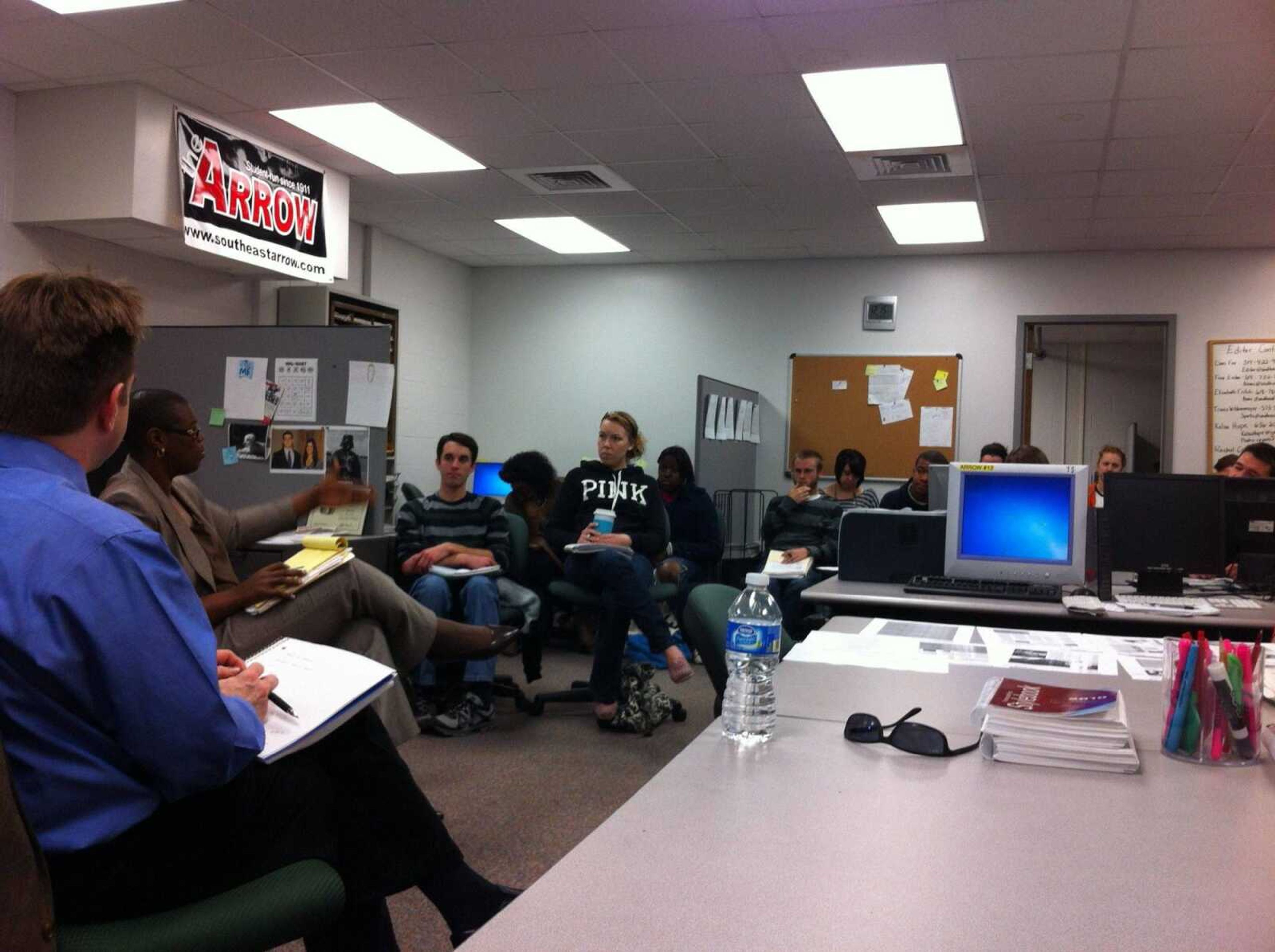The Department of Mass Media at Southeast Missouri State University has some big changes in the works for its curriculum.
One of the largest changes is the convergence of the broadcast news sequence of the television and film option and the journalism and radio options into the multimedia journalism option. Students who pursue this major will be taught aspects of broadcast, print, video and online journalism. This grouping brings the total number of options in the Department of Mass Media to four: public relations, advertising, multimedia journalism and television and film.
The class structure for incoming students has changed as well. Some of the core classes, which are required for all mass media majors regardless of their option, have been eliminated. This has freed up space in the four options for more specialized classes in that particular field.
Some classes, such as MC 201: Writing for the Mass Media, have been replaced by updated courses within the individual options that provide a more tailored learning experience for students, according to Dr. Tamara Baldwin, chair of the Department of Mass Media.
"By taking out some things required in the core, that made some room," Baldwin said. "Now there are seven dedicated courses in each option."
There are only five core classes remaining. In addition, UI 382: History and Philosophy of American Mass Media and MA 155: Statistical Reasoning, both classes outside the department, are still required for mass media students. Students may see some courses within the individual options with a familiar name or course number, but many of these will have changed content to reflect the department's goal of better preparing students for the modern media world.
"We revised almost everything to make our classes and options correlate better with what's happening in the real world with mass media, assuring that students get the skills they need to work in a multimedia environment," Baldwin said.
The mandatory internship or practicum, which was previously required for mass media students, is also gone. While it will still count as an elective, now internships can be pursued by students without being restricted by school guidelines.
"This frees our students up to grab those opportunities, and more, along the way," Baldwin said.
While modifications to the department are already under way, the total change to the curriculum won't come until 2014-2015, according to Dr. Susan Gonders, a professor in the Department of Mass Media at Southeast. This is due to the consideration the department is giving to current students. In order to avoid cutting students off from courses they'd need to graduate, the department is proceeding carefully.
"We've got to start phasing out courses that are being retired and phasing in new courses," Gonders said. "It becomes very difficult to anticipate the exact numbers."
The number of students within each of these classes is also a concern. The department's goal is to reach an average of 26 students per class. However, the rules of the department's accreditation mandate no more than 15-20 students for skills courses.
"It's like a jigsaw puzzle," Gonders said. "However, in spring of 2012, as of today [Feb. 2] we have an average of 26.4 [students per class]." This puts the department two years ahead of schedule, since it had been asked to reach the 26 student number by the fall of 2014, according to Gonders.
"We're already making tremendous strides," Dr. Bruce Mims, a professor in the Department of Mass Media, said. "Look at how the Arrow and RAGE have changed just in the last year. And all of that was in preparation and in anticipation of where this curriculum is going to take us." Part of the new curriculum will require students to work at both the Arrow and RAGE as student workers, advertisers and managers.
Even with the complete shift to the curriculum two years away, Baldwin said that right now is a good time for the department and that all the faculty are working together to make these changes to help the students.
"I'm real proud that we've accomplished this goal," Baldwin said. "We feel better about our changes because we know it'll benefit our students."






